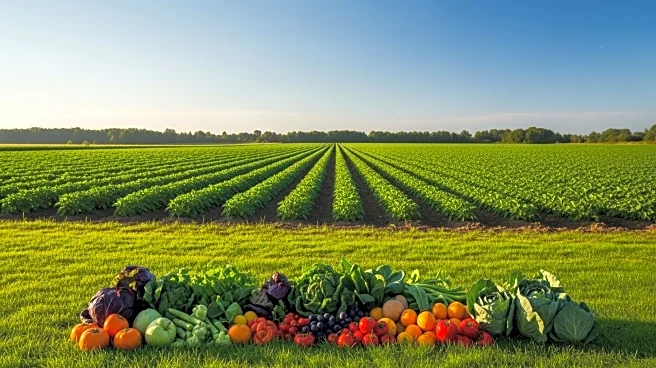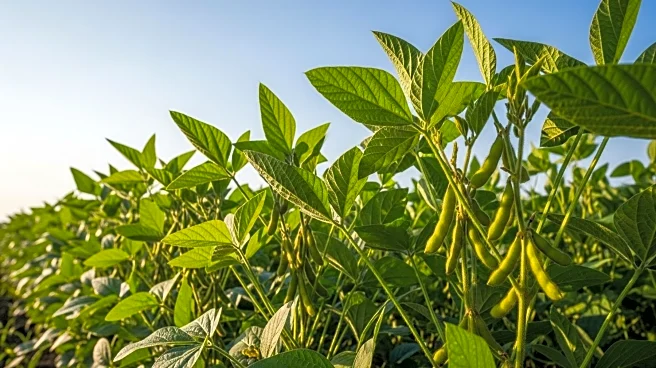What's Happening?
The USDA has released its 25th Crop Progress report for the 2025 growing season, highlighting mixed conditions across major crops. As of September 21, the corn harvest in the top 18 corn-growing states reached 11%, aligning with the five-year average but slightly below last year's progress of 13%. The report indicates that 91% of the corn crop has reached the dent stage, and 56% has matured, both slightly behind the five-year averages. The condition of the corn crop is reported as 66% good/excellent, 24% fair, and 10% poor/very poor, with a slight decline in the good/excellent category from the previous week. Soybean conditions also showed a decrease, with 61% rated good/excellent, down 2 percentage points from the prior week. The soybean harvest reached 9%, matching the average. Winter wheat planting is underway, with 20% completed, slightly behind the average, and 4% of the crop has emerged.
Why It's Important?
The USDA's report provides critical insights into the current state of U.S. agriculture, affecting market expectations and pricing for corn, soybeans, and wheat. The mixed crop conditions could influence commodity markets, impacting farmers' income and decisions on future planting. The decline in crop conditions may lead to increased volatility in agricultural markets, affecting stakeholders from producers to consumers. The report's findings are significant for policymakers and agricultural businesses as they plan for the upcoming seasons and address challenges such as weather impacts and disease pressures.
What's Next?
Farmers and agricultural stakeholders will closely monitor weather patterns and disease pressures that could further affect crop conditions. The USDA's upcoming reports will be crucial in assessing the progress of the harvest and the potential yield outcomes. Market analysts and traders will adjust their forecasts based on these developments, potentially influencing commodity prices and trade strategies. Additionally, the government may consider interventions or support measures if adverse conditions persist.
Beyond the Headlines
The report underscores the ongoing challenges faced by U.S. agriculture, including climate variability and disease pressures. These factors highlight the need for continued research and investment in resilient crop varieties and sustainable farming practices. The broader implications may include shifts in agricultural policy and increased focus on climate adaptation strategies to safeguard future harvests.











